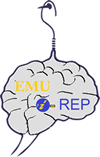JavaScript is disabled for your browser. Some features of this site may not work without it.
Interrogating Vitality in Streets: An Analysis and Survey in Two Cypriot Towns
Jalaladdini, Siavash
Date:
2012-08
Abstract:
ABSTRACT: This thesis focuses on the issue of vitality in urban public spaces, streets in particular, as a major indicator of their success. It is widely accepted that the visual-artistic approach of modern architects and designers left the streets as a traffic channel for movement with free standing buildings alongside without serving the people‟s social needs and activities (i.e. Jacobs, 1961; Anderson, 1978; Gehl, 1987; Roberts and Greed 2001; Oktay, 1990; Carmona et al, 2003), and in this context, the relation between the people and physical setting got less concerns, and urban public spaces in general transformed to undesirable areas lacking appropriateness for pedestrian activity such as walking, shopping, socializing, relaxing or entertaining. The author believes that streets have the potential to become the lifeblood of cities rather than mere traffic channels, and they should be seen as “multi-functional urban „patterns‟” in Christopher Alexander‟s terms. On the other hand, from a behavioral point of view, what attracts people most in public spaces is other people, although many urban spaces are being designed as though the opposite were true; people talk of "escape" and "retreat" when asked in questionnaires, however on the street most tend to be drawn to social centers or the most lively areas (Whyte, 1980). In line with these propositions, this study first provides a theoretical framework for understanding the social value and role of urban public spaces on quality of life in cities, second, tries to determine the essential components for vitality in streets, and finally, investigates how the major streets (Ziya Rızkı Street in Kyrenia and Salamis Street in Famagusta) in two important towns of North Cyprus are working. The work is pursued mainly through analyzing the physical environment as a setting for potential social uses, direct observations of people in real-world everyday situations, and applying questionnaires. Partial interviews will also be held in order to thoroughly understand the reasons behind the active use of certain areas. It is expected that the findings of the study can be used as a useful source for future research and in constructing policies of a comprehensive framework for future urban design.
Keywords: Urban public spaces, social life, vitality, streets, Cypriot towns.
…………………………………………………………………………………………………………………………
ÖZ: Bu tez kamusal mekanların başarısının önemli bir göstergesi olarak, kentselkamusal mekanlarda, özellikle cadde ve sokaklarda canlılık konusuna yoğunlaşmaktadır. Yaygın bir şekilde kabul edilmektedir ki, çağdaş mimarların ve tasarımcıların görsel-sanatsal yaklaşımı, cadde ve sokakları, birbirinden bağımsız binaların yan yana geldiği, insanların toplumsal gereksinmelerine ve etkinliklerine hizmet etmeyip, sadece taşıt trafiğini kolaylaştıran trafik arterlerine dönüştürmüştür (i.e. Jacobs, 1961; Anderson, 1978; Gehl, 1987; Roberts and Greed 2001; Oktay, 1990; Carmona et al, 2003). Bu bağlamda, insanlar ve fiziksel çevre arasındaki ilişkilerin önemi yitirilmiş, ve kentsel kamusal mekanlar yürüyüş, alışveriş, sosyalleşme, dinlenme ve eğlenme gibi yaya etkinliklerinden yoksun, itici alanlara dönüşmüştür. Yazara göre cadde ve sokaklar sadece trafik arterleri olmayıp kentlerin candamarları olma potansiyeline sahiptirler, ve Christopher Alexander‟ın betimlediği üzere, “çok işlevli kentsel „örüntüler‟” olarak görülmelidirler. Öte yandan, davranışsal bakış açısından, kamusal mekanlarda insanları en çok çeken diğer insanlardır; insanlar genellikle anketlerde diğer insanlardan “kaçış” ihtiyacından bahsetse de, sokakta iken çoğunlukla sosyal merkezlere ya da en canlı yerlere yönlenirler (Whyte, 1980). Çalışma fiziksel çevrenin potansiyel sosyal kullanımlar için analizi, her günkü gerçek yaşam çevrelerinde insanların doğrudan gözlemlenmesi, ve anketlerin uygulanması yöntemleriyle gerçekleştirilmektedir. Anketlere ek olarak düzenlenen karşılıklı görüşmeler yoluyla belli alanların daha etkin kullanımının nedenleri daha derinden anlaşılmaya çalışılmaktadır. Çalışmanın bulgularının gelecekteki araştırmalarda ve kentsel tasarım için kapsamlı bir çerçevenin oluşturulması yönünde politikaların oluşturulmasında yararlı bir kaynak olarak kullanılacağı umulmaktadır. Anahtar kelimeler: Kentsel kamusal mekanlar, toplumsal yaşam, canlılık, cadde ve sokaklar, Kuzey Kıbrıs.
Description:
Master of Science in Urban Design. Thesis (M.S.)--Eastern Mediterranean University, Faculty of Architecture, Dept. of Architecture, 2012. Supervisor: Prof. Dr. Derya Oktay.
Files in this item
This item appears in the following Collection(s)
Search EMU I-Rep
Browse
-
All of DSpace
-
This Collection
My Account
Statistics
Eastern Mediterranean University, Özay Oral Library, Famagusta, North Cyprus via Mersin 10 TURKEY
If you find any errors in content, please contact osman.soykan@emu.edu.tr
If you find any errors in content, please contact osman.soykan@emu.edu.tr

EMU I-Rep by Eastern Mediterranean University Institutional Repository is licensed under a Creative Commons Attribution-Gayriticari-NoDerivs 3.0 Unported License
DSpace software copyright © 2002-2011 Duraspace








